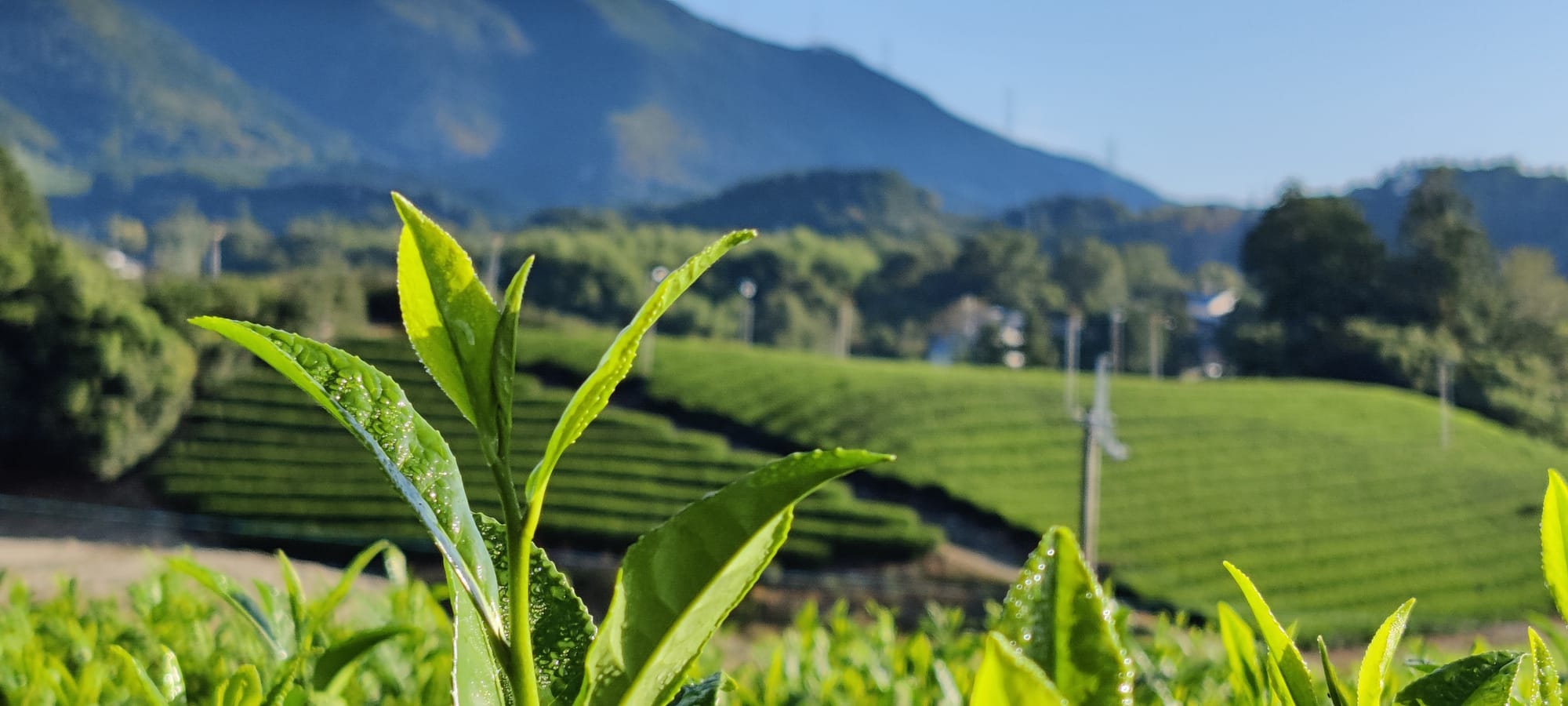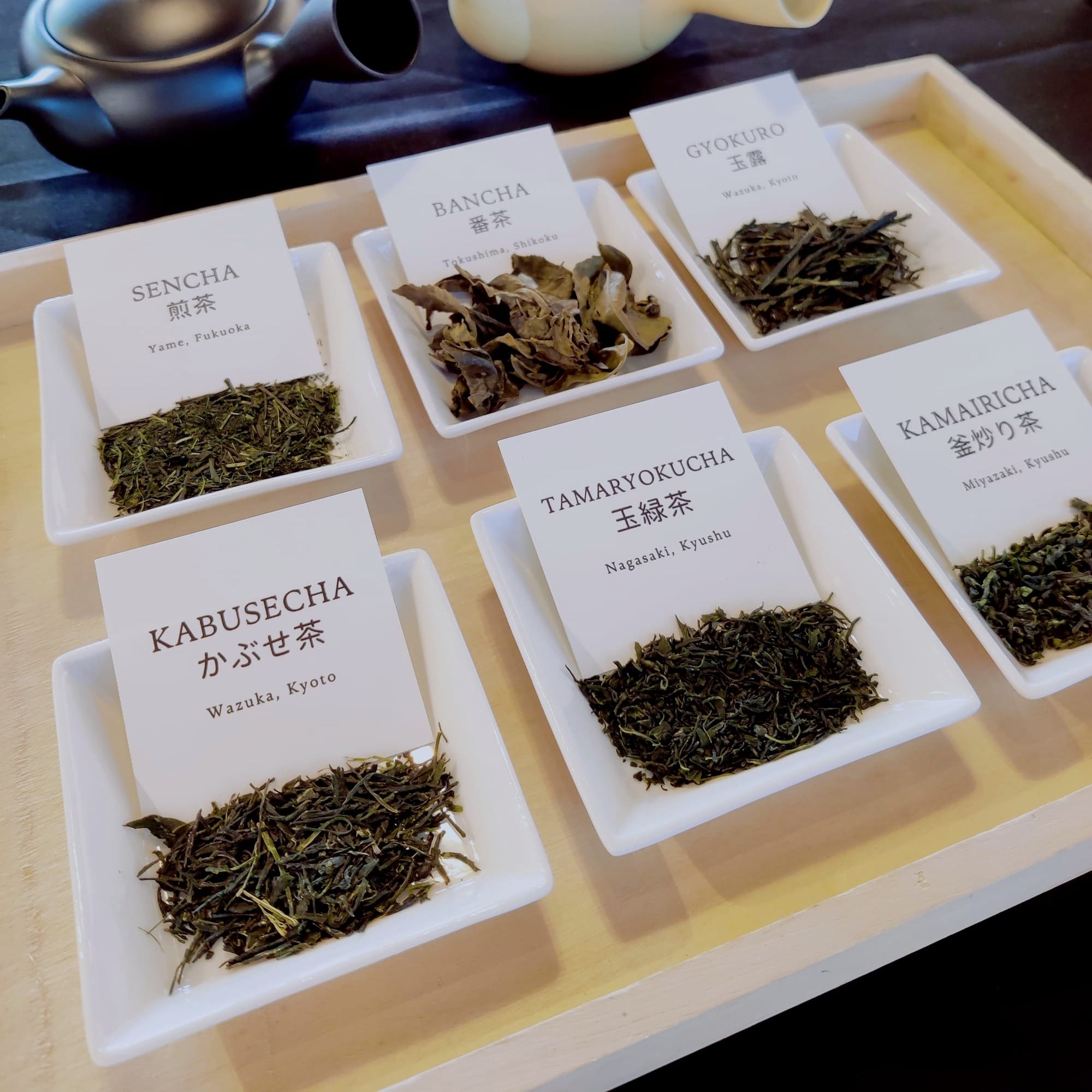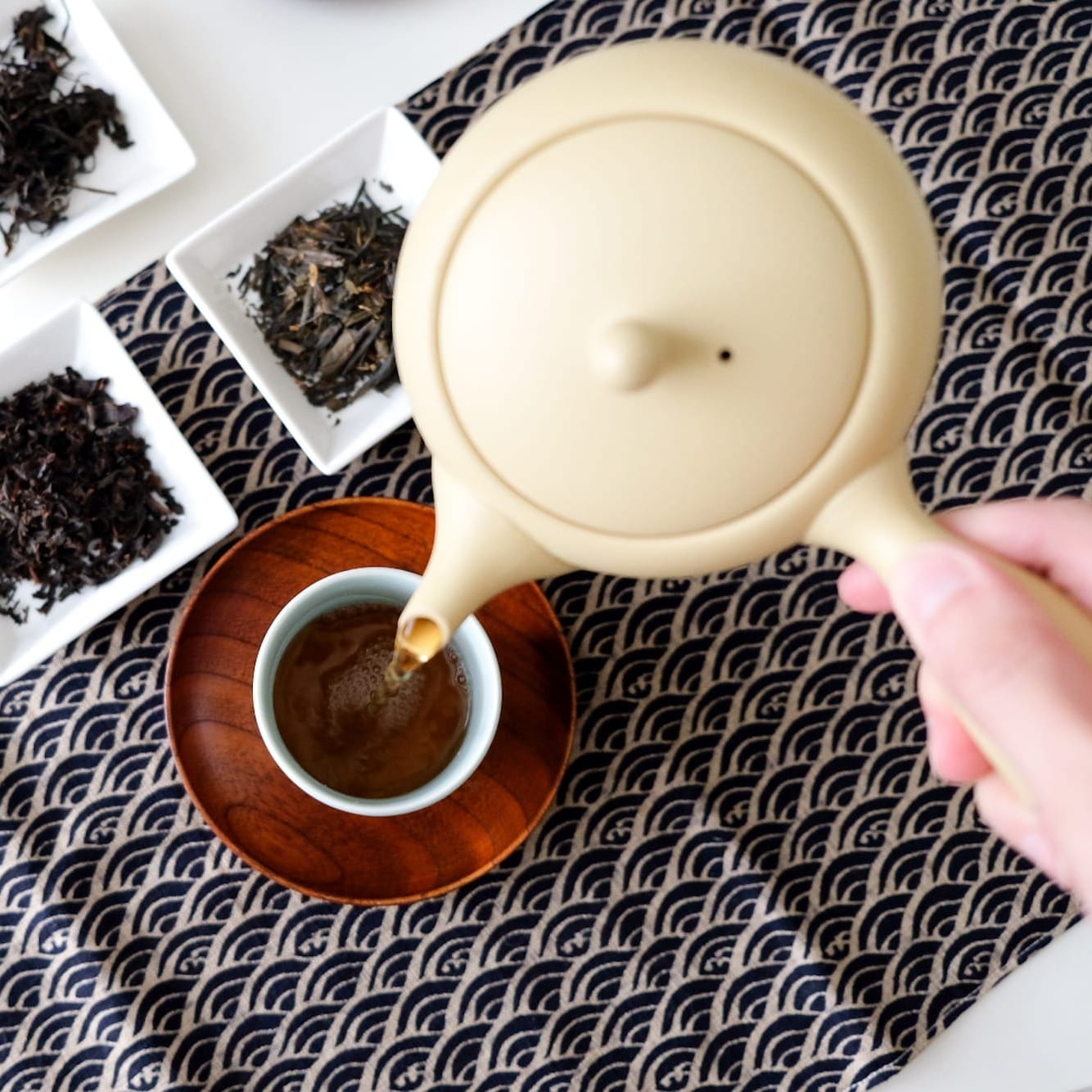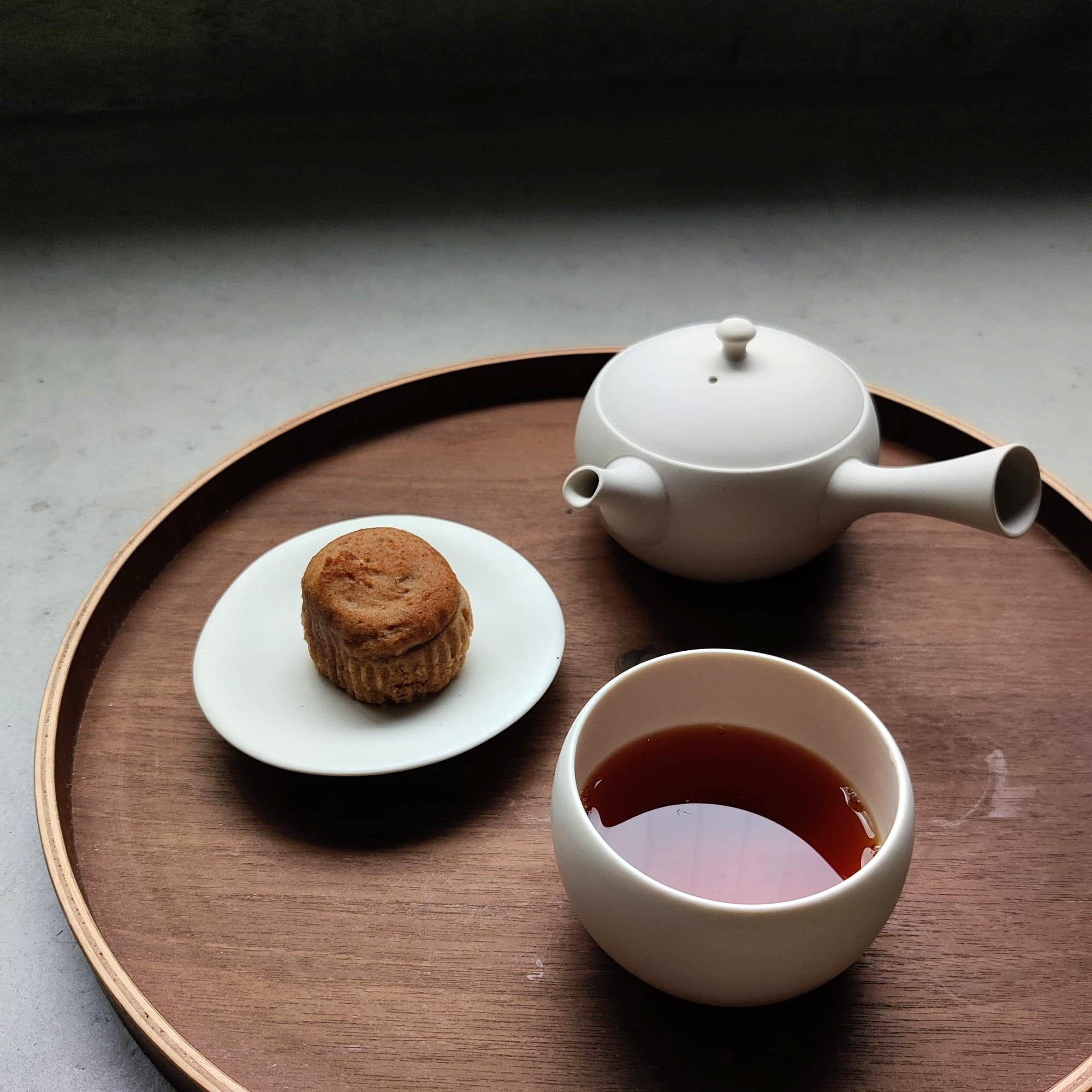Your Guide to Japanese Tea Culture
From the serene art of the tea ceremony to the everyday joy of a perfectly brewed Sencha, Japanese tea culture is a gateway to a world of flavour, tradition, and mindfulness. Whether you’re a casual tea drinker, a cultural explorer, or someone who just really loves a good cup of tea, this quick guide will help you connect with the essence of Japanese tea.
Table of Contents:
A Brief History of Japanese Tea
The Different Kinds of Japanese Teas
Tools of the Trade
Brewing the Perfect Cup of Japanese Tea
The Art of the Tea Ceremony (Chanoyu)
Bringing Japanese Tea Culture into Your Daily Life

A Brief History of Japanese Tea
Tea first made its way to Japan thanks to Zen monks who travelled to China to study Buddhism. Amongst the treasures they brought back? Tea! Given its rarity, tea drinking was initially reserved for temples and the imperial court.
Then came Eisai Myōan, a Buddhist monk who changed everything. In 1191, he returned from China with tea seeds, planting them in different regions and writing about tea’s health benefits. He promoted tea as medicine (smart move), and his book catapulted tea into the spotlight. He also introduced the powdered tea method of the time—sound familiar? This was the beginning of matcha and the foundation for what would later become Chanoyu, the Japanese Tea Ceremony.
Meanwhile, in China, powdered tea lost popularity, but Japan kept refining it into the matcha we know today. So, when did loose-leaf tea join the party? Enter Ingen Ryūki, a Chinese monk who brought loose-leaf teas to Japan in the 16th century. His influence led to the development of Senchadō, another tea ceremony style focused on steeped tea rather than whisked tea.

The Different Kinds of Japanese Tea
Of the six types of tea, green tea dominates Japan, making up 94% of production. But which green tea reigns supreme? If you’re thinking matcha, you’re in for a surprise! While matcha is a global favourite, it only accounts for about 6% of Japan’s green tea production. The real MVP? Sencha, which makes up more than half of all tea produced.
Here are some of the most common Japanese teas you’ll find:
- Sencha – The everyday favourite.
- Gyokuro – The luxury, umami-rich tea.
- Matcha – The famous powdered tea.
- Genmaicha – The toasty, comforting blend with roasted rice.
- Hojicha – The smooth, roasted green tea with a nutty aroma.
Beyond these, Japan has some lesser-known gems like Fukamushicha (deep-steamed tea) and Tamaryokucha (a curled-leaf green tea). And while green tea reigns supreme, Wakoucha (Japanese black tea) is gaining popularity, and Japanese fermented teas remain a hidden treasure waiting to be explored.

Tools of the Trade
Traditionally, Japanese loose-leaf tea is brewed in a kyusu, a teapot with a distinctive side handle. But if you don’t have one, don’t worry—you can use any teapot! No teapot? A French press, a ceramic mug, or even a glass measuring cup will do. Just strain out the leaves before drinking. The best teapot is the one you have on hand—brewing tea is about creativity, not perfection.
Brewing the Perfect Cup
Brewing Japanese tea is all about balance. Here’s a quick guide:
- Green teas love lower temperatures (around 70–80°C) to avoid bitterness.
- Wakoucha (Japanese black tea) thrives in near-boiling water.
- Genmaicha & Hojicha can handle higher temperatures but need a shorter steeping time.
If you need a starting point:
- Sencha: 5g tea, 200ml water at 75°C, steep for 45–60 seconds.
- Genmaicha & Hojicha: 5g tea, 200ml water at 95–100°C, steep for 15–30 seconds.
Feel free to adjust based on your taste—it’s all part of the fun!

The Art of the Tea Ceremony (Chanoyu)
Tea is more than a drink in Japan—it’s a philosophy. Chanoyu, the Japanese Tea Ceremony, dates back 450 years to Sen no Rikyu, who defined the Way of Tea. While the ceremony might seem like a refined performance, every movement and choice reflects deeper principles.
The core of Chanoyu is guided by four principles and an example for each:
- Harmony (wa) – Ex. Creating balance between people, objects, and nature.
- Respect (kei) – Ex. Handling utensils and interacting with others with care.
- Purity (sei) – Ex. Mindfully preparing tea and maintaining a clean, serene space.
- Tranquillity (jaku) – The result of practicing the first three principles—inner peace.
Mastering these principles takes years, but even a simple bowl of tea can offer a glimpse into this world.

Bringing Japanese Tea Culture into Your Daily Life
When Buddhist monks first drank tea in Japan, it was both a medicine and a tool to stay alert during meditation. Today, we mostly reach for tea for its flavour and comfort—but in the rush for convenience, we’ve lost some of its rituals.
Incorporating Japanese tea culture into your day is easier than you think. Instead of making “a quick cup” of tea, try making a mindful cup:
- Choose your tea and teaware with intention – Match your mood, the season, or even the weather.
- Engage your senses – Look at the leaves, inhale their aroma,and feel their texture.
- Brew with attention – Notice how the leaves unfurl and how the aroma deepens.
- Sip slowly – Appreciate the flavours and how they evolve.
It’s not about following strict rules—it’s about taking a moment to pause and truly experience your tea.
Japanese tea culture is a vast and beautiful world, full of history, tradition, and opportunities for mindfulness. Whether you’re savouring a bowl of matcha, brewing a pot of Sencha, or simply taking a moment to slow down with tea, there’s always something new to explore. So grab your favourite cup, steep some tea, and enjoy the journey—one sip at a time.